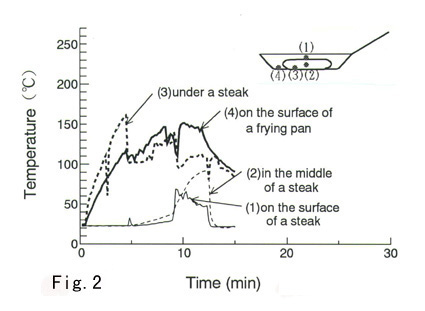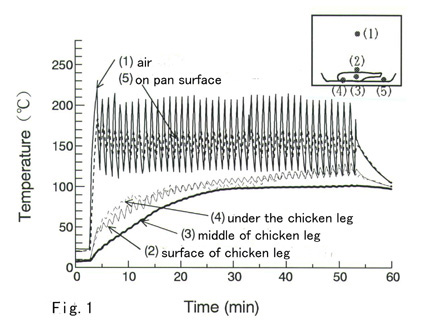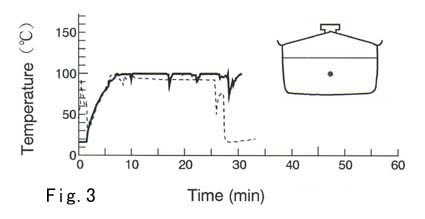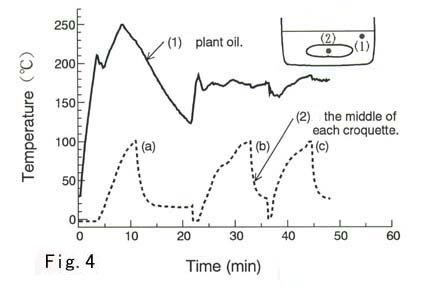

Fig.1 shows an experiment where a
chicken leg (207g) was
cooked in a gas oven with a dimension of 30.5cm X 29.3cm X 18.5cm using
low heat (160�Ž). It took 50 minutes to cook satisfactorily. However,
when the temperature was raised to 230�Ž, it only took 15 minutes. A
fan was used to minimise the air convection layer to improve the heat
transfer.

Fig.2 shows the
temperature change when a steak (140g) was
cooked in a frying pan at low temperature. It took 6 minutes to be
cooked through. When food requires much heat, the pot used in the solar
cooker should have some heat storage and a high surface temperature. A
hundred fifty degrees is sufficient to cook a steak.

Fig.3 shows the
temperature change when a stew was cooked in
a saucepan. The stew was made with a potato, a carrot, an onion and
chicken (200g),
and braised, then put into the saucepan. It took 30 minutes to cook and
the temperature rose to about 100�Ž.
�@�@

Three croquette were
fried. The oil temperature was around
200�Ž, as shown in Fig.4.
If food requiring much heat is put into a pan, the temperature drops suddenly. It is important to know which cooking device is most appropriate with regards to the kind of food to be cooked.
